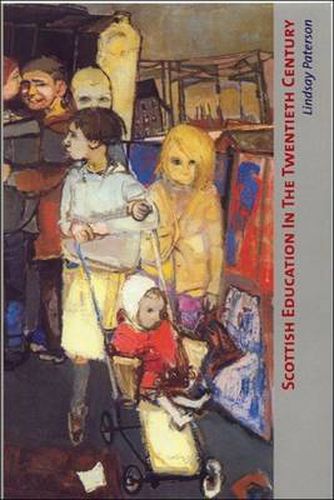Readings Newsletter
Become a Readings Member to make your shopping experience even easier.
Sign in or sign up for free!
You’re not far away from qualifying for FREE standard shipping within Australia
You’ve qualified for FREE standard shipping within Australia
The cart is loading…






Scotland’s education system has been claimed by many to be one of the most successful in the world and its alleged decline has generated a great deal of controversy. This is an account of the history of 20th-century Scottish education. It investigates Scotland’s response to the key question faced by all mass systems of education. How can democracy be reconciled with the necessity of selection - both selection of culture in the maintenance of excellence, and selection of people, allocating them to differentiated occupations while also preparing them for life as equal citizens in the common culture of the community? Paterson argues that the Scottish answer to this has been recurrent attempts to give wide access to common types of educational institution, but continuing to define that education in fairly traditional academic terms. This is, then, also Scotland’s attempt to reconcile the tension between social solidarity and liberal opportunity, between the needs of the individual and the needs of society and its inherited culture. The book is organized chronologically into two broad parts, covering competition and opportunity, 1880s-1930s, and welfare and individualism, 1940s-1990. Within these periods, there are chapters on each of the main sectors of education.
$9.00 standard shipping within Australia
FREE standard shipping within Australia for orders over $100.00
Express & International shipping calculated at checkout
Scotland’s education system has been claimed by many to be one of the most successful in the world and its alleged decline has generated a great deal of controversy. This is an account of the history of 20th-century Scottish education. It investigates Scotland’s response to the key question faced by all mass systems of education. How can democracy be reconciled with the necessity of selection - both selection of culture in the maintenance of excellence, and selection of people, allocating them to differentiated occupations while also preparing them for life as equal citizens in the common culture of the community? Paterson argues that the Scottish answer to this has been recurrent attempts to give wide access to common types of educational institution, but continuing to define that education in fairly traditional academic terms. This is, then, also Scotland’s attempt to reconcile the tension between social solidarity and liberal opportunity, between the needs of the individual and the needs of society and its inherited culture. The book is organized chronologically into two broad parts, covering competition and opportunity, 1880s-1930s, and welfare and individualism, 1940s-1990. Within these periods, there are chapters on each of the main sectors of education.